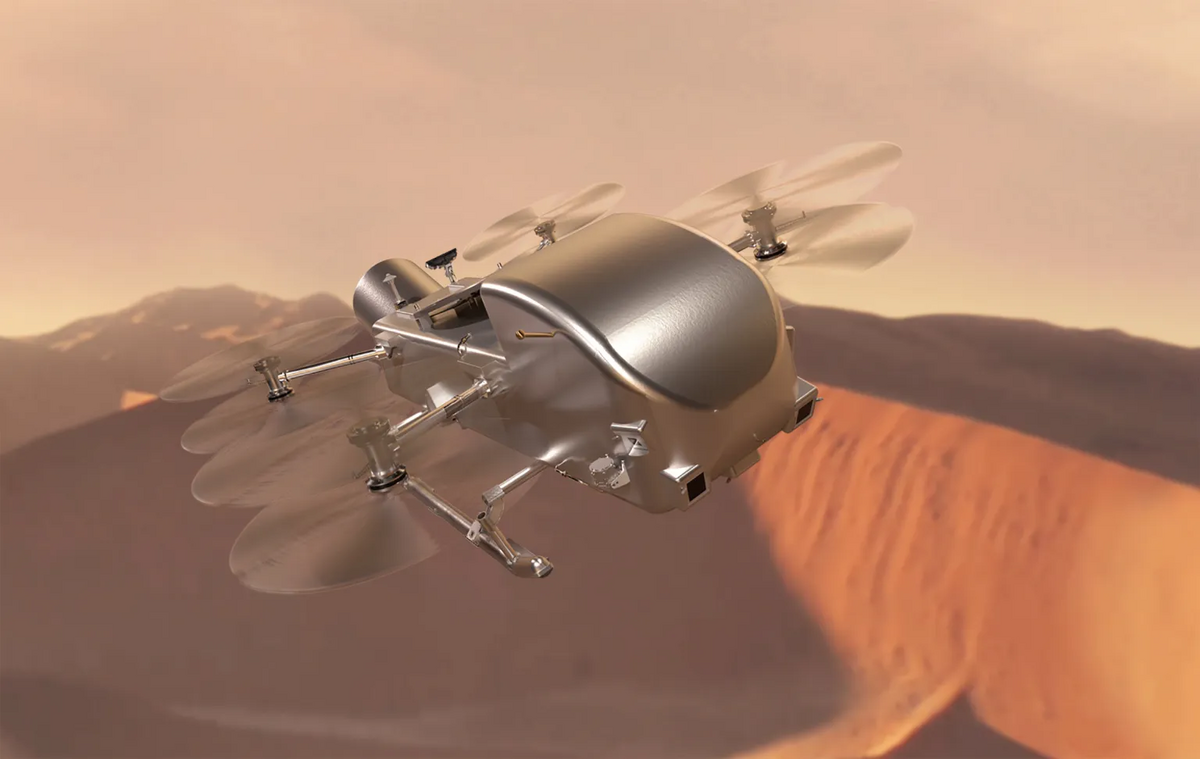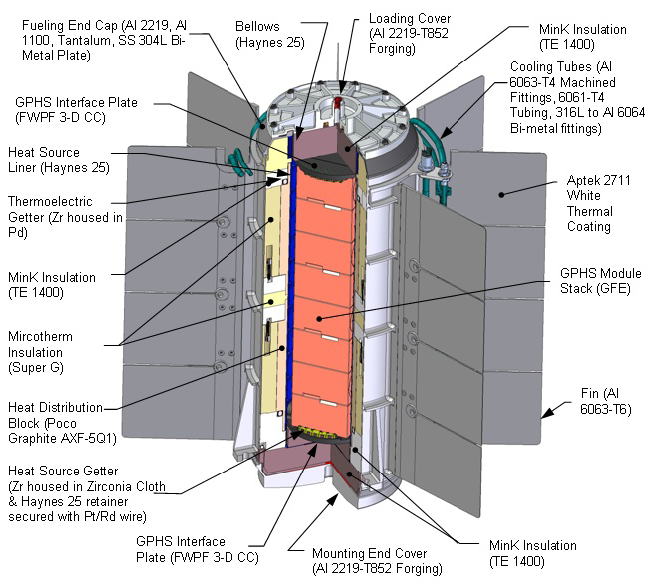Titan's dense atmosphere and low gravity mean that the flight power for a given mass is a factor of about 40 times lower than on Earth.
[3] The atmosphere has 1.45 times the pressure and about four times the density of Earth's, and local gravity (13.8% of Earth's) makes flight easier than on Earth, although cold temperatures, lower light levels and higher atmospheric drag on the airframe will be challenges.
[23]
Dragonfly should be able to fly several kilometers,
[39] powered by a
lithium-ion battery, which is to be recharged by a
Multi-Mission Radioisotope Thermoelectric Generator (MMRTG) during the night.
[21] MMRTGs convert the heat from the
natural decay of a
radioisotope into electricity.
[3] Twenty-four
Radioisotope Heater Units (RHUs) are also kept reserved for this mission.
[40] The rotorcraft should be able to travel ten miles (16 km) on each battery charge and stay aloft for a half hour each time.
[41] The vehicle is to have sensors to scout new science targets, and then return to the original site until new landing destinations are approved by mission controllers.
[41][42]







